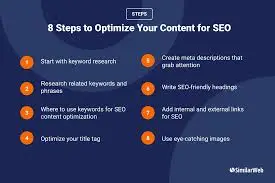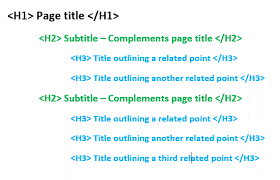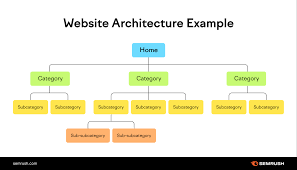Mastering On-Page SEO for Better Search Rankings
Gaining control over on-page SEO is essential to increasing the relevancy and visibility of your website. Here, I go into detail on some crucial methods for properly optimizing your on-page content.
Strategies for Content Optimization
Search engine optimization strategies that work are essential for improving the ranking of your website. When concentrating on On-Page SEO, make sure that your writing organically incorporates pertinent keywords. This increases your content’s relevancy to users’ queries while also assisting search engines in understanding it.
Another crucial On-Page SEO tactic is to include meta tags, like title tags and meta descriptions. These elements give search engines and users a preview of your content and can affect click-through rates and overall visibility.
Effective On-Page SEO also revolves around optimizing content for readability and engagement. This means that you should utilize bullet points, clear headings, and short paragraphs to make your material easier to navigate and more user-friendly. This will increase dwell time and lower bounce rates.
Making frequent updates and revisions to your content in accordance with On-Page SEO best practices guarantees that your website stays authoritative and relevant. Updating content with the most recent data and fashions aids in sustaining high search engine rankings and bringing in steady visitors.

Successful Creation of Meta Tags
In On-Page SEO, the title tag holds special significance. It should contain the main keywords and appropriately represent the page’s content. In addition to helping search engines comprehend the topic of the page, a well-optimized title tag also encourages users to click through from the search results.
Another crucial component of on-page SEO is the meta description, which should contain secondary keywords and provide a succinct overview of the page’s content. A well-written meta description can increase click-through rates by giving users a clear picture of what to anticipate from your page, even though it has no direct effect on rankings.
Regularly checking and updating your meta tags is crucial for On-Page SEO that works. Making sure your meta tags are up to date and optimized can help you sustain and enhance your search engine ranking as user behavior and search trends change.

Optimization of Header Tags
One of the core components of On-Page SEO is header tag optimization. Header tags (H1, H2, H3, etc.) organize your content and aid search engines in determining the importance and hierarchy of the content on your page. Making good use of header tags guarantees that your material is arranged logically, improving search engine indexing and user experience.
The major keyword and a clear definition of the page’s main topic should be included in the H1 element for on-page SEO. This tag is essential for informing search engines about the topic of the page, which makes it a valuable component for raising search engine rankings.
When necessary, secondary keywords should be incorporated into the content by using header tags like H2 and H3, which further divide the information into manageable pieces. This content’s hierarchical structure enhances readability overall and aids search engines in deciphering the connections between its various components.
Header tag reviews and updates depending on keyword performance and content modifications are crucial for On-Page SEO. Optimizing header tags helps to keep your content relevant and helps search engines and users understand what it is trying to say.

Improvement of Website Architecture
One of the most important aspects of On-Page SEO is optimizing URL structure. A well-optimized URL should be brief, informative, and contain pertinent keywords that match the content of the page. This increases the page’s likelihood of ranking better in search results by assisting search engines in understanding the topic of the page.
Clear, keyword-rich URL structure improves search engine visibility and user experience in on-page SEO. Search engines can index and crawl URLs more easily if complex parameters are avoided and words are separated by hyphens.
Striving for a logical hierarchy in URL structure is crucial for On-Page SEO. Link organization into categories and subcategories facilitates better content navigation for both users and search engines by mirroring the structure of your website.
Your URLs stay relevant and optimized if you regularly analyze and update your URL structure by On-Page SEO best practices. This continuous upkeep enhances the overall usability of the website and helps it rank higher in searches.

Enhancement of Image Alt Text
Improving image alt text is an important part of on-page SEO. Alt text describes images in text, which aids search engines in deciphering the context and substance of visual assets. You may increase the visibility of your photographs in search results and enhance overall search engine optimization by adding pertinent keywords to your alt text.
Well-written alt text for On-Page SEO enhances accessibility for individuals with visual impairments while also helping with indexing. Ensuring that all users can comprehend the information of your photos through descriptive and keyword-rich alt text improves user experience overall and supports inclusive design.
The descriptions in alt text should be brief and pertinent when optimizing for on-page SEO. Steer clear of keyword stuffing and concentrate on writing precise, educational descriptions that accurately convey the meaning of the image. This method enhances the image’s interpretation by search engines and increases the relevancy of your page in search results.
Continually analyzing and revising alt text according to On-Page SEO guidelines guarantees that your photos stay optimized as your content changes. Well-optimized alt text promotes successful image search visibility and helps keep search rankings high.

Incorporating these On-Page optimization strategies will not only enhance your website’s search engine rankings but also create a more user-friendly experience. Stay tuned for more insights into mastering the art of SEO for a successful online presence.
